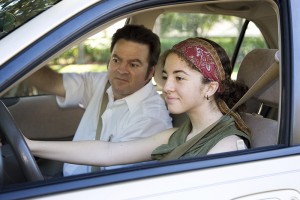Inexperience
 The majority of novice drivers do not have sufficient practical experience to handle the complex task of driving when they are first licensed. Formal driver education involves a few hours of driving practice. This is not even enough for novice drivers to become even minimally competent, much less proficient. Even the 60 hours of supervised driving required for learners in North Carolina is not adequate. A substantial amount of actual driving– in a wide variety of situations – is necessary before proficiency develops.
The majority of novice drivers do not have sufficient practical experience to handle the complex task of driving when they are first licensed. Formal driver education involves a few hours of driving practice. This is not even enough for novice drivers to become even minimally competent, much less proficient. Even the 60 hours of supervised driving required for learners in North Carolina is not adequate. A substantial amount of actual driving– in a wide variety of situations – is necessary before proficiency develops.
Although additional research is needed to determine how much driving experience is “enough,” teens continue to improve even after years of driving. Crash rates are quite high in the first few months of driving. They decline sharply in the first year, but continue declining for several more years.
During the learner period, teens need substantial supervised practice in situations they are likely to encounter once they begin driving unsupervised. This includes bad weather (e.g., heavy rain, snowy/icy roads), darkness, interstate highways, rural roads, heavy traffic, and many other situations and conditions.
Teens should get plenty experience with these challenging conditions while there is a parent riding with them. This gives parents the chance to share their wisdom about how to handle these situations. Additionally, the more time teens spend driving with a parent in the car, the more likely it is they will encounter situations and events that happen only rarely (e.g., another driver running a light or doing something unexpected). It is important that teens first experience these rare, but highly dangerous situations when there’s an adult along to help.
Here are several situations that teens need plenty of supervised experience with to become safe drivers:
Night driving – Research shows crash rates increase substantially at nighttime for newly licensed teen drivers. Driving at night is more challenging for all drivers – darkness, fatigue, alcohol use, and other factors contribute to this higher risk. North Carolina requires 10 hours of supervised driving between 9 p.m. and 5 a.m. However, there is no research showing that 10 hours is sufficient.
Multiple passengers – The presence of other teen occupants in the vehicle with a young driver often compounds the tendency to engage in impulsive behaviors. Emerging research also suggests these passengers can be highly distracting for a new driver, even when the driver is not directly engaged with the passengers. The simple presence of passengers can cause a driver to fail to notice developing dangers on the roadway. For these reasons, passenger restrictions are critical during the initial months of unsupervised driving.
Varying roadway types – Some road types are especially dangerous for young, inexperienced drivers. For example, rural roads with narrow lanes, low shoulders, sharp curves are particularly tricky for an inexperienced drivers, especially at night. It is important that young drivers get lots of experience on all types of roadways during their learner license period.
Challenging weather conditions –Heavy rain, fog, or snowy/icy roads are rare in North Carolina. For that reason, it’s important to take special trips for practice driving when these occur. Complete beginners aren’t ready to handle these, but sometime during the learner license period teens need to experience these with a parent there to advise them.

